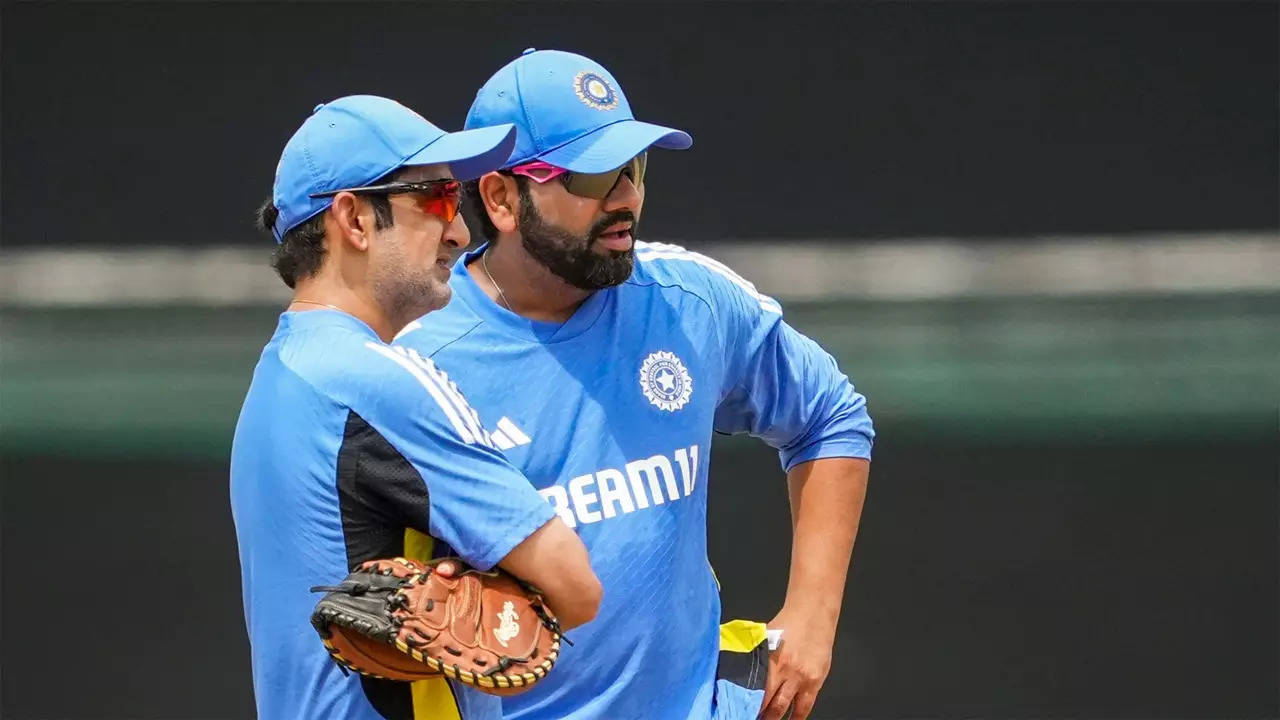India vs South Africa: Old school values keep visitors in the hunt but mistakes leave second Test on the edge
India vs South Africa: Old school values keep visitors in the hunt but mistakes leave second Test on the edge

With minimal fuss, Ajinkiye Rahane uppercut Marco Jansen for six in front of square. It was a terrific and terrifying stroke. Full of raw power and silky grace.
It was founded on a bedrock of some essential truths in batting. That the head must be still when the bat makes contact with the ball. That the weight must be balanced. That getting into position early allows for better placement and timing.
It was also plucked from the modern mad-dash universe. There were echoes of Sachin Tendulkar at Centurion in 2003, but this thrummed with a more contemporary beat. It was laced with the sort of gumption that is now synonymous with the Indian Premier League and T20 ingenuity.
But here’s the thing. Everything that worked in this Test match, so delicately poised with both teams eyeing victory inside four days, was founded on ancient principles. So much of what went wrong is no doubt impacted by more recent influences.
That is not to bash white ball cricket or global franchise leagues. It is just to state the obvious that Test cricket requires a certain degree of nous to get right.
Take the day's opening partnership of Rahane and Cheteshwar Pujara that dominated the first hour. The pair took guard this morning knowing that another low score could spell the end of their international career in whites. And rather than go into a shell, they batted with intent. They left with intent. They defended with intent. And when the South African bowlers strayed, as they so often did in the morning session, India’s middle order stalwarts with 173 Tests between them sent the ball screaming to the boundary.
South Africa were far too short too often, as they were later in the day when India’s tail wagged and bumped the required target to something a little more daunting. On both occasions Kagiso Rabada, Lungi Ngidi, Duanne Olivier and Jansen appeared directionless and angry. Like drunken brawlers throwing wild haymakers from unstable legs.
It was baffling to witness. The day before Shardul Thakur took seven wickets by hitting a challenging length that wasn’t full enough to drive and wasn’t short enough to force off the back foot. With a little movement and enough variation off the deck he was a nightmare to face.
Rather than take notes, the South Africans appeared to revert to type. Asian teams have historically struggled against the short ball. The Wanderers is a hostile environment for visiting teams. This pitch is one of the quickest in the world. And South African bowlers are big, mean and want to bully batters into submission. These declarative statements used to be true but are harder to defend. India's batters have proved they can't be intimated. The Wanderers was all but empty. The pitch was two paced and those big angry South Africans were made to look reckless.
Maybe the Proteas just missed their mark but it was telling that when they followed Thakur’s lead and pitched it up they found breakthroughs. Rabada needed just seven balls to dismiss Rahane and Pujara after both had reached their half-centuries. Rahane’s wicket was a beauty, short of a length, moving away, forcing a prod. Pujara’s was slightly fuller but still in the proverbial uncertain corridor. These were good areas. Asking questions. Testing techniques.
Not that Rishabh Pant was in a mood for all that antiquated nonsense. With the score reading 167 for 5 having been 155 for 3 moments earlier, India’s wicketkeeper charged down the crease and took a wild swipe at a back of a length ball delivered by Rabada. He’d only faced two balls prior to this moment of berserker madness and did well just to get a slight edge on it.
At 24-years-old Pant has only known a world in which the double-step slog is a legitimate tactic. I have no doubt that he now looks back and regrets his decision. Everything was going so well for India before Rabada’s double strike and all Pant needed to do was consolidate. But I also have no doubt that a part of him still believes that the only thing wrong with the shot was its execution.
This is a young man who hit 128 runs from 63 balls in the IPL. His counterattacking 97 from just 118 balls helped save a Test in Sydney by tilting Australia's pendulum off its axis. There is history with Pant. Only, that history is rooted in something very recent.
Not like Dean Elgar’s resistance. The Proteas skipper has said before that he considers the monikers ‘gritty’ and ‘battling’ - two adjectives so often used to describe him - as reductive. He’s the second highest scoring opener of the last five years and has registered seven hundreds and averaged over 40 in that time. He’s clearly more than a willing grunt in the face of enemy fire.
But how can you not extol these virtues on the man? Virtues that would have been recognised in a Test opener since they started capitalising the T. His runs are gritty, he battles for every one of them, he defends as if his wicket has value beyond the confined context of a cricket match.
He is in essence what a batter on this platform should be about, at least some of the time. Sure Aiden Markram’s 31 from 38 balls was a better watch. Some of those drives through the covers deserve their own NFT. But once again a pretty start and a failure to launch will define a Markram innings.
He was sent packing by Thakur who unlocked the South African opener with cunning and forethought. After being lashed behind square with a scything cut shot, the bowler zeroed in on Markram’s pads. A growing weakness saw him struck three times in his crease. The final one procured the wicket.
Then Keegan Petersen entered the scene, batting at first drop, tasked with performing an arduous task against Jasprit Bumrah, whom he drove with aplomb and stood firm in the wake of sensational seam bowling. It was Ravichandran Ashwin, an Indian spinner, a concept so terrifying to South Africans, who had Petersen lbw to one that gripped.
Either team could win this thing. It is a shame only journalists and commentators and those fortunate to be sitting in a private suite will be there to see it. This is an absorbing contest. It’s on days like these that the devotees of this strange game lift our voice. Sometimes with joy, other times with frustration. It is days like this that will keep this old format alive.
Test cricket has evolved. This is not the game of past generations. Rahane’s six over cover-point proves that. But it still requires respect. Some old truths hold sway for a reason.
Daniel Gallan is a freelance journalist from Johannesburg now living and working in London, though the Wanderers will always be his spiritual home. He has contributed for a number of publications around the world including Cricinfo, Cricbuzz, the Guardian, the Telegraph and SuperSport. You can follow him on Twitter @danielgallan.
Read all the Latest News, Trending News, Cricket News, Bollywood News, India News and Entertainment News here. Follow us on Facebook, Twitter and Instagram.



 Admin
Admin 









































